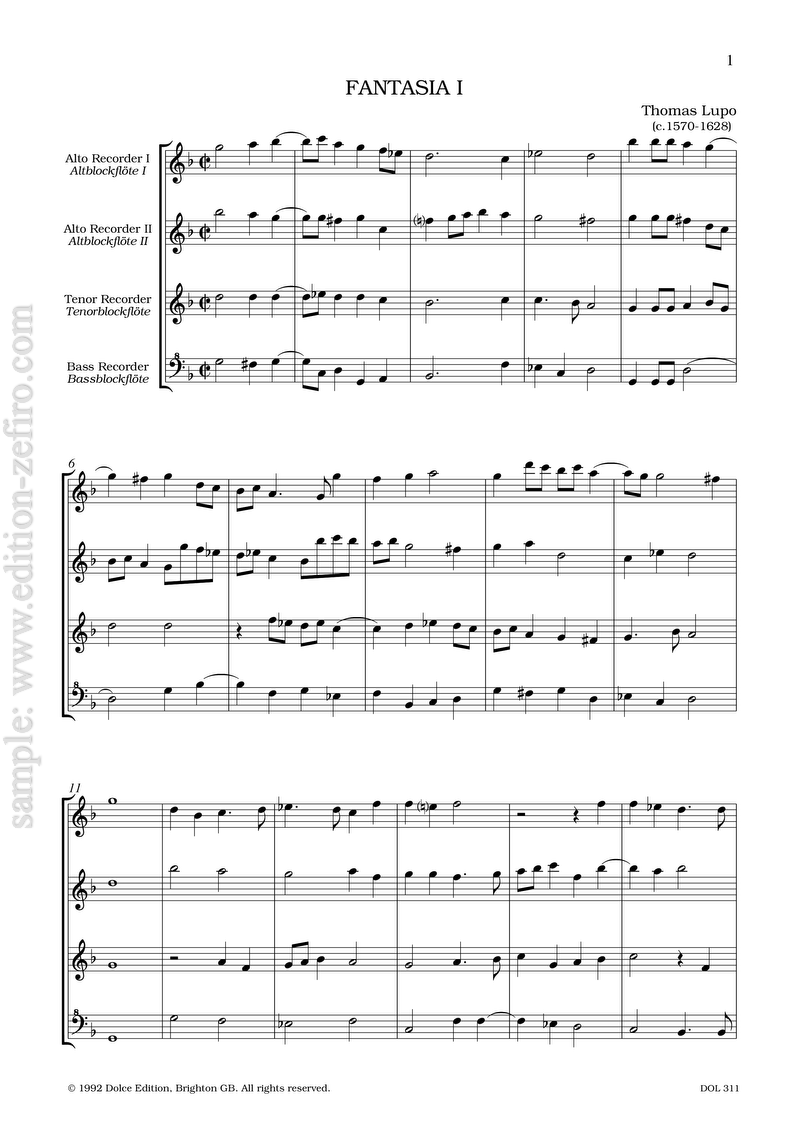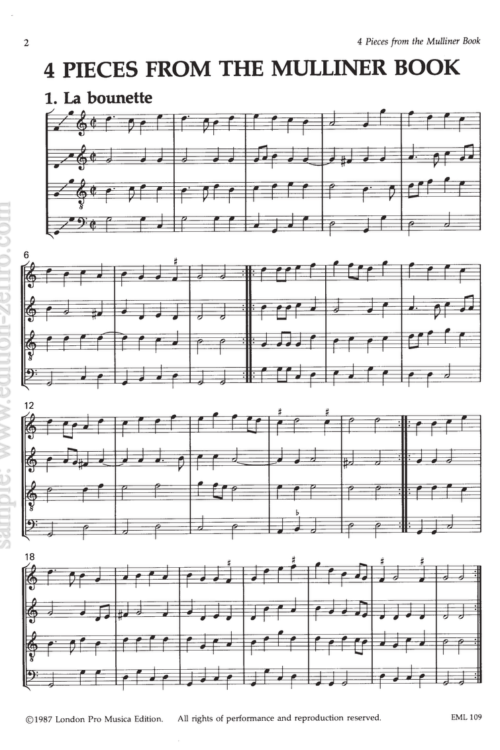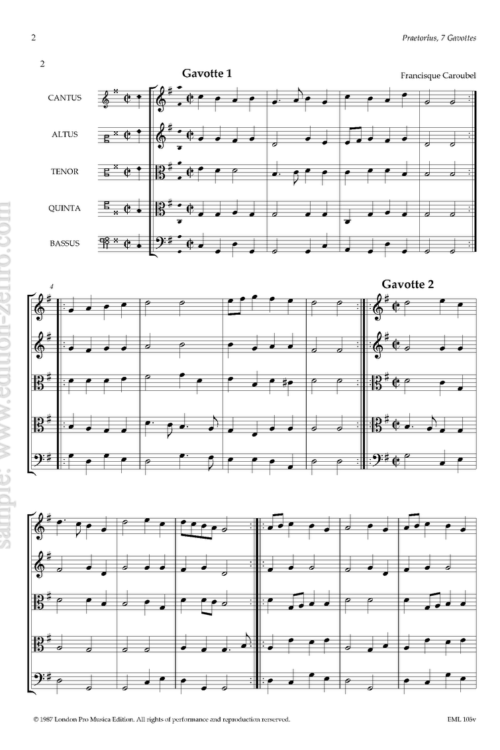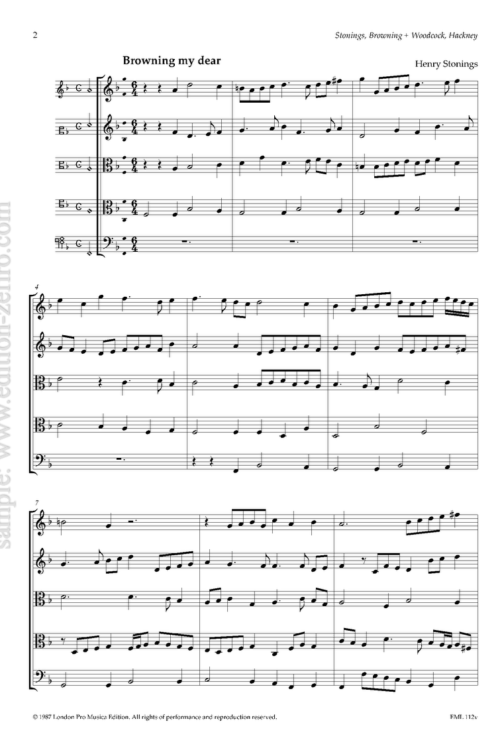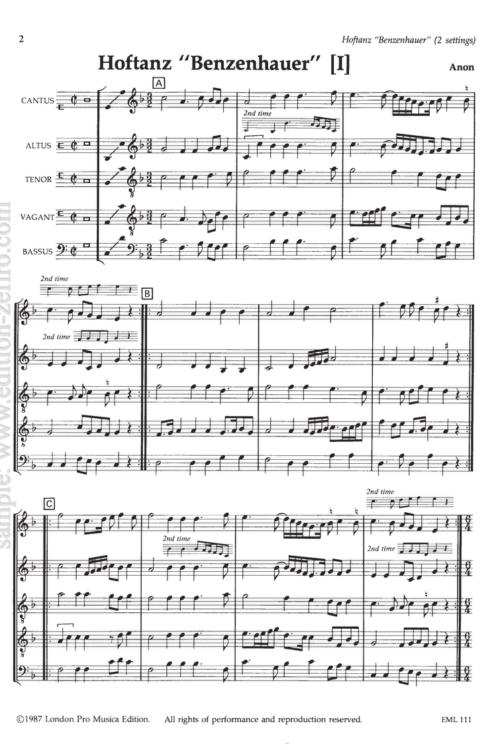These are relatively short, colourful pieces, that may have had a theatrical context, rather than long abstract pieces. Highly recommended.
These five short fantasies by Thomas Lupo (c.1570- 1628) are quite distinct from the rest of his four-part consort music: they are perhaps more accurately described as airs, and are at times quite close to the airs of Jenkins and other early seventeenth-century composers. In performance they appear to call for frequent changes of mood, of the kind that one would expect in the late madrigal. It seems likely that this music was originally intended for violins, rather than the viols that might have played Lupo’s more conventional fantasies.
Though modest in terms of length and contrapuntal complexity, these pieces have some attractive harmonic features, for instance in no. 3, where the composer deliberately alternates between major and minor. At times there is a certain amount of colourful incidental dissonance, as in no. 2: such passages may take a few play-throughs before they sound right to the relatively inexperienced player. In no. 1 we have the opposite problem: the final cadence, at least as written, is actually rather static; while string players can compensate for this by expressive shaping of the notes, recorders do not really have this option: one alternative is to introduce divisions, either in the top part or the tenor, or possibly both.
The top parts of all these pieces were all originally written at a pitch a fourth, of in the case of no. 3, a minor third, lower than that at which they appear here. To fit the present AATB combination, the two lower parts have been moved up somewhat; also in bars 31-2 of no. 1 the second and third parts have been exchanged. The original versions gave a substantial gap between the second and third parts: I have tried to preserve a vestige of this feature, but modified it to suit the special qualities of recorders. Choosing keys for some of these pieces was a little difficult, because of the use today of F altos rather than the G instruments that Lupo’s contemporaries would have had: nos. 3 and 4 had to go into a relatively flat key to avoid the top f’’’ that is usually problematic on consort recorders in F, but this would put the tenor part in a slightly awkward key. I would recommended that players with G altos should transpose these two pieces up a tone.
(Bernard Thomas)


